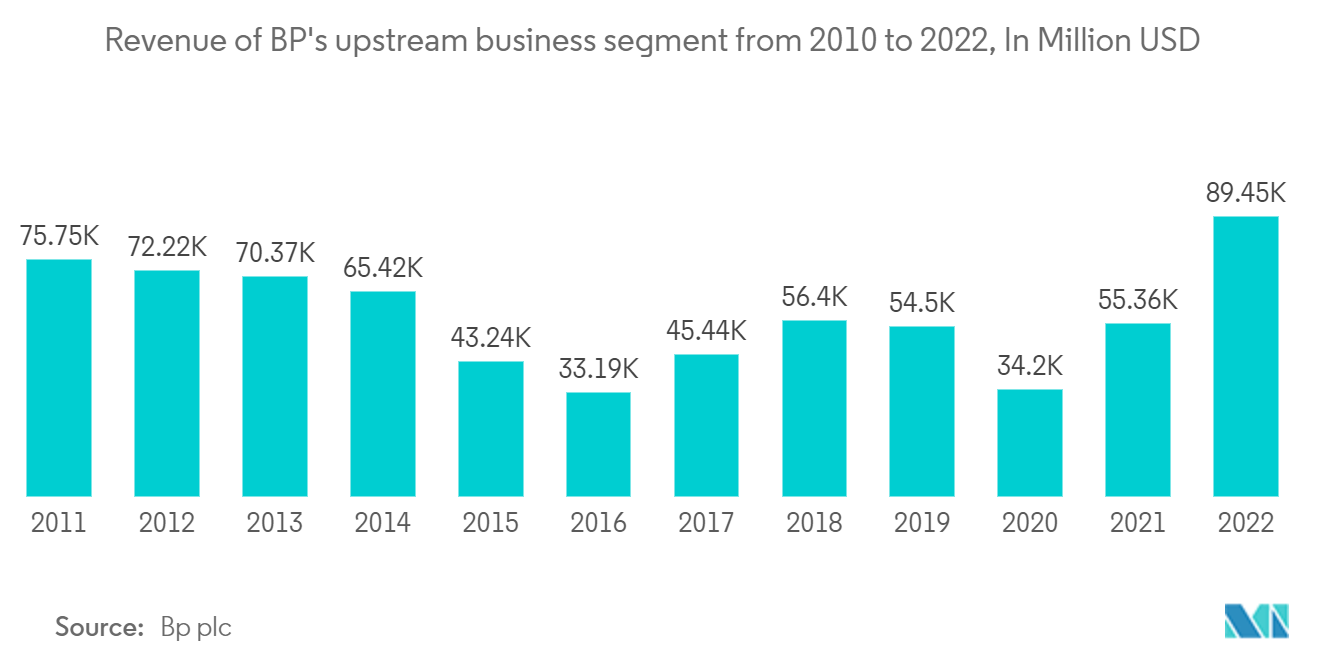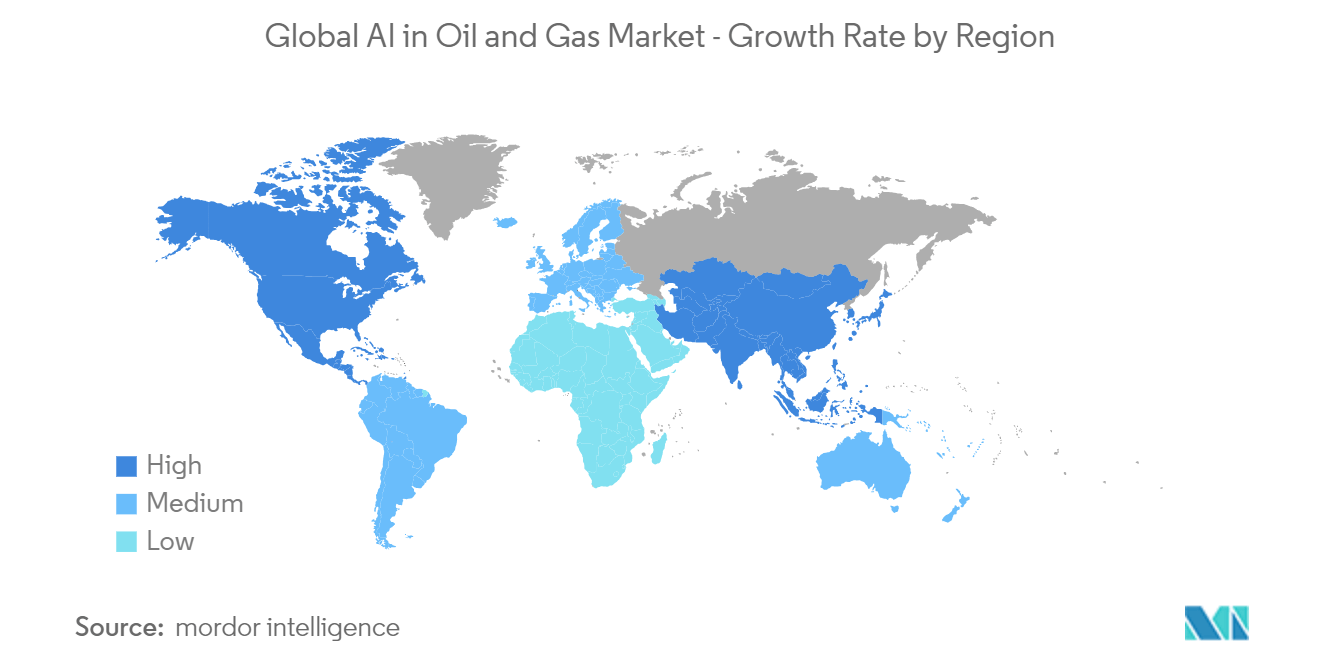Market Trends of AI In Oil And Gas Industry
Upstream Operations to Witness Significant Growth
- Oil and Gas industries worldwide are trying to make the oil exploration processes more efficient and optimized. The operations in this field are the major factors driving the usage of AI in oil and gas companies. The AI tools can help oil and gas companies digitize records and automate the analysis of the gathered geological data and charts, which can lead to the potential identification of issues, such as pipeline corrosion or increased equipment usage.
- Companies like BP and Royal Dutch Shell have planned to achieve net-zero carbon emissions by 2050, and are under increasing pressure to minimize their carbon footprint in compliance with the Paris Agreement. Shell is employing AI technology to do predictive maintenance of individual pieces of equipment or entire systems to reduce its carbon footprint. This factor allows the corporations to foresee and handle probable equipment faults before they occur.
- Oil companies are adopting AI technology to increase their operational efficiencies, which is creating an opportunity for the market vendors, and raising the contribution of Upstream operation in the overall market growth. For instances, in December 2022, Oil and Gas Holding Co. (nogaholding), ADNOC's Abu Dhabi-based technology venture, and AIQ have collaborated to integrate and implement digital solutions and artificial intelligence into its upstream operations, which would enable nogaholding to use AIQ's most recent AI technologies to improve operational efficiency.
- Companies can obtain insightful data-driven information that will enhance their business outcomes in their upstream processes by incorporating AI software into their operations. This process may involve feeding curated data records and information from data sources to the software, including structured documents, PDFs, handwritten notes, and audio or video files.
- AI has multiple applications in the oil and gas industry, such as production optimization with computer vision to analyze seismic and subsurface data faster, downtime minimizing for predictive maintenance for oil and gas equipment, reservoir understanding, and modeling for predicting oil corrosion risks to reduce maintenance costs. Moreover, the market has been witnessing many investments by big players in technology.

North America is Expected to have a Significant Market Share
- Owing to the increasing adoption of AI technologies across the oilfield operators and service providers and the robust presence of prominent AI software and system suppliers, especially in the United States and Canada, the North American segment is anticipated to account for the largest share of the AI in oil and gas market over the forecast period.
- Factors such as the strong economy, the high adoption rate of AI technologies across the oilfield operators and service providers, a robust presence of prominent AI software and system suppliers, and combined investment by government and private organizations for the development and growth of R&D activities are projected to drive the demand for AI in the oil and gas sector in the region.
- ExxonMobil, one of the leading oil producers in the country, announced its plans to increase the production activity in the Permian Basin of West Texas by producing more than 1 million barrels per day (BPD) of oil equivalent by as early as 2024. This capacity is equivalent to an increase of nearly 80% compared to the present production capacity.
- In addition, owners and operators in the United States recognize how IT-based automation can productively address the unique challenges of the upstream oil and gas sector. For instance, Baker Hughes uses the InForce surface control system, which combines the hydraulic power to activate downhole tools and the control logic to govern an intelligent well system. PLC controls system functions for more complex completion configurations. It is primarily used where remote operations must be done through existing SCADA.
- Among all the enabling technologies, AI is projected to play a significant role in the oil and gas industry in the region. It has also been used to increase the safety of gas stations for preventive maintenance due to the growing number of fire incidences at gas stations in North America.

